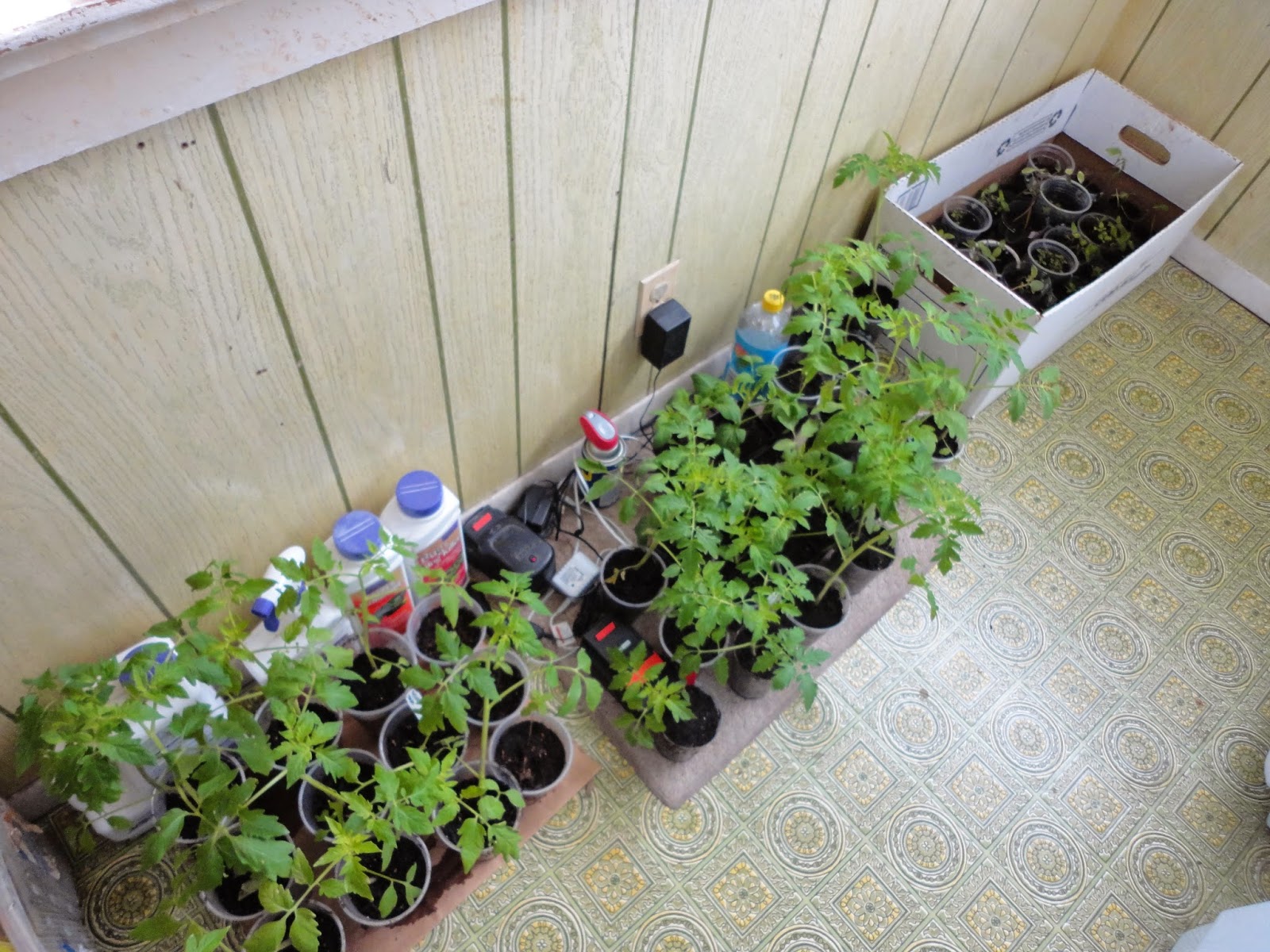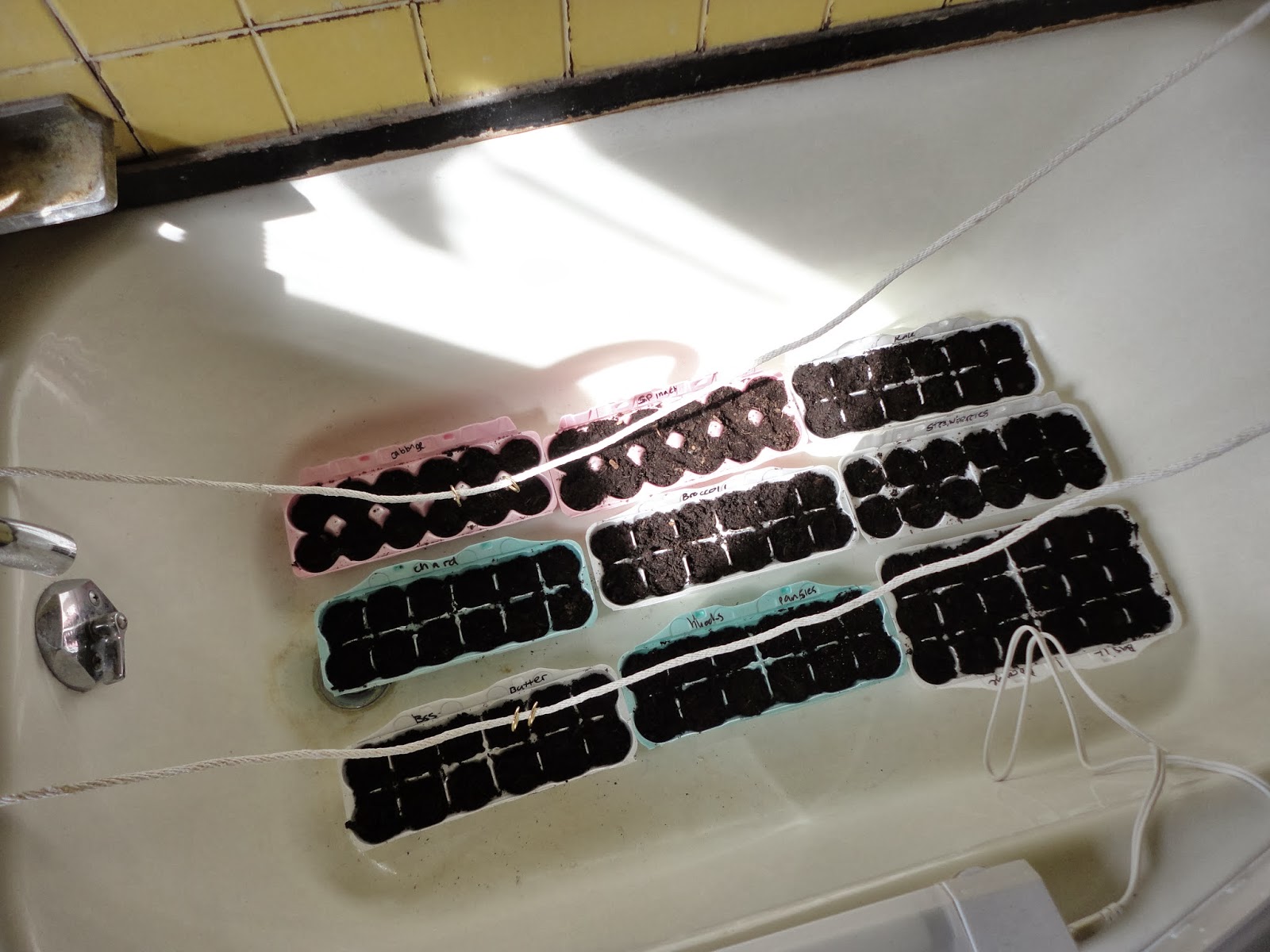Since it's easy to catch dirt and water in a tub, I dedicate the upstairs tub we never use to seed starting. But you can do it anywhere as long as you protect your floor from water. In order for the shelf to fit the tub, and for it to accommodate the 24" lights I have, I made the seed shelf 1.5 feet x 2 feet.
I also made it as tall as would fit because I want to grow as many plants as possible. Something like this can, of course, be made any height, but even at 6 feet it has a small enough footprint to fit easily almost anywhere.
So fast to make out of seven 2x2s. And yes, I take for granted that I have a circular saw and power drill, but if you don't you can borrow mine or I bet one of your friends' dads can let you borrow his.
1. Cut 2' off of four of the 2x2s, giving you four 6-foot pieces and four 2-foot pieces.
2. Cut each of two 2x2s into four 1.5-foot pieces and one 2-foot piece. Out of these two boards you will have eight 1.5-foot pieces and two 2-foot pieces.
3. From the remaining 2x2 cut two 2-foot pieces, leaving a 4-foot piece.
4. From that last 4-foot piece, cut two 1.5-foot pieces. You'll have one unused 1-foot piece left.
And that's what you need, four 6-footers, eight 2-footers, and ten 1.5-footers. Hope that didn't just make sense to me.
Once your wood is cut, assemble two ladder-like panels from four 2-foot pieces between two 6-foot pieces. Allow a foot of space at the top and bottom, and 16 inches between each of the 2-foot pieces.


Then join the two panels with the 1.5-foot sections.
 The last two 1.5-foot pieces go on top, and from there you can hang lights to use every shelf, plus the floor.
The last two 1.5-foot pieces go on top, and from there you can hang lights to use every shelf, plus the floor.MDF is super easy to cut to shape, just draw a razor along where you want to cut it and snap to break. Each shelf gets a board, and there you go! Completed seed shelf.
So how much did it cost? More than it should have, since I bought oddly expensive peg board. Don't get that, I guess I had some silly reason for buying it but it's not necessary. The 2x2s were $13.71and the peg board was $15.94, bringing my total to a meager $29.65!
But even with spending too much on board, thirty bucks and I've tripled my space! Be a smarter shopper than me since lights are still necessary (yes, the whole operation costs more than $30, but all you need are some cheap WalMart grow lights).
Happy planting!
















